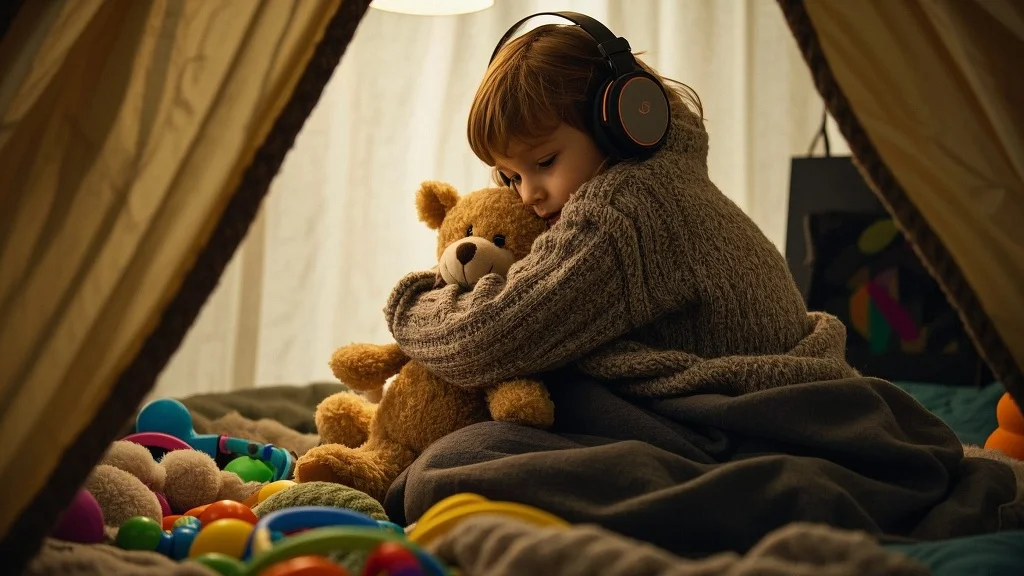When your child is overwhelmed, simple mind-body techniques can help them regain control—without relying on distractions like screen time. Here are science-backed strategies to try:
1. The “Comfort Box” Trick
- Fill a small box with calming items (soft blanket, stress ball, glitter bottle).
- Let your child choose what soothes them best—it could be anything!
- Why it works: Gives kids a tangible way to self-regulate when emotions feel too big.
2. Repeat & Validate Their Feelings
When your child yells, “My teacher gave too much homework!”
✅ Do: Mirror their words—“Wow, that does sound like a lot!”
❌ Don’t: Jump to solutions or dismiss their frustration.
- Why it works: Feeling heard reduces the need to escalate for attention.
3. The “5-4-3-2-1” Grounding Technique
If they’re spiraling, ask:
“Name 5 blue things… 3 things you can touch… 1 deep breath.”
- Why it works: Shifts focus from emotional brain (amygdala) to logical brain (prefrontal cortex).
4. The Power of “Om” Chanting
- For babies: Rock while chanting “om” to match their breath.
- For kids: Have them join in—the vibration calms the nervous system.
- Science says: Lowers activity in emotional brain areas (per MRI studies).
5. The Butterfly Hug (For Self-Soothing)
Teach your child to:
- Cross arms over chest, fingers toward shoulders.
- Alternate tapping hands (like butterfly wings) while breathing deeply.
- Great for: Anxiety at school or bedtime when you’re not there.
6. Bubble Breathing (Make It Visual!)
Instead of just “Take a deep breath,” say:
“Imagine blowing a giant bubble—slow and steady!”
- Why it works: Deep breaths activate the parasympathetic nervous system (the “rest and digest” mode).
7. The Cold Water Trick
For instant calm:
- Dab a cool washcloth on their face.
- Let them splash hands in cold water.
- Science says: Cold lowers heart rate and interrupts panic signals.
Key Takeaway
These tools teach lifelong coping skills—unlike screens that just distract. Start with one technique and practice during calm moments. Over time, your child will learn to self-soothe!
Which trick will you try first? Let us know in the comments!








